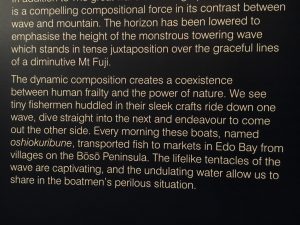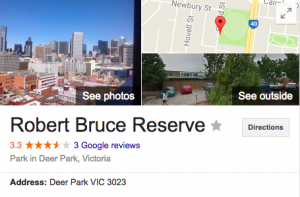My studio experience:
Reflecting back from the start of the semester, I only had a vague idea of what noticing was supposed to be until I had to go through four of the assessments that were assigned to us. Through the tasks that were given to us by Hannah, I was able to develop the skill of noticing both consciously and subconsciously.
From Mason’s reading, he states that intentional noticing occurs through a professional setting such as teaching a lesson, a lecture, a workshop with effort exerted throughout every session where you practice noticing. This reading taught us the art of noticing and how one’s state of mine should be whenever we are noticing certain things – from places, the environment around to the most minuscule of things such as dust, insects, the way the light reflects on objects, etc. Essentially, Mason’s reading iterates that in order to notice, you must improve and enhance your sensitivity to your own gestures, postures whilst also converting your development into research and putting that research to practice. As I can recall from our first ever class discussion, the question was raised about how we can develop the skill of purposefully noticing and if I can recall correctly, some of these suggestions included:
- Consciously practising it every day – this can be through photography, videography, etc
- Research – online, offline, reading
- Taking notes of your own observation of the world, whether it would be on your phone, notebook, anything
Through these methods, I slowly but surely applied these techniques to my work but the guidelines from the assessment tasks and the weekly tasks also assisted in my journey of noticing. One task that stood out to me, in particular, was from Assesment Three’s Experiments in Noticing. The task was segregated into three parts which, therefore, forced you to really see the bigger picture as you progressed from the first part of your experiment to the third and final part. As I used different mediums throughout the experiment, these were one of my epiphanic moments of realising the different levels of noticing – since I compiled my video and images into collages in Experiment II and Experiment III, this gave a completely different outlook on seeing the environment around me. especially when there are images side by side, allowing you to compare the similarities and differences between both.
Because of this experience, noticing has become a skill that is both beneficial and meddlesome depending on the situation that you want to apply noticing. For example, when making creative media such as music, videos, photographs, noticing becomes a handy skill to have because it allows your future audience to let them see what you saw, what you heard and ultimately, what you felt. That is one of the many perks of noticing. However, constantly notcing and putting effort into insignificant things may place a certain amount of stress on yourself and could even distract your from your daily life such as meditation, other works that do not require noticing, etc. There is an undefined rule about where you should place your energy into noticing but essentially, you should be able to ALSO practice directing the energy of noticing. It is not just about practicing the sole activity but also where you project this skill and how you would be able to switch it on or off. All in all, this my personal and circumstantial experience with noticing so yes, noticing can be an exclusive activity because you are using your own willpower to see the unseen.
My own performance in the studio:
From having absolutely no knowledge of how to notice to becoming a full-fledged noticer when creating media, the timeline in between suggests that my performance in the studio is something like this:

And it just continues growing as long as I keep making media. Starting with the first ever, unmarked assessment, I did not do too well because of my lack of knowledge and research – I could not express myself too well because I was not used to the language of seeing things that were not supposed to be seen. Usually, it would be right in front of me to analyse and easily detect but in this studio, I had to analyse and write about things I could not see. Hannah’s feedback from Task 1 was the specificity of my work – I did what was supposed to be done but when it came to elaborating the processes of what I had done, it was quite difficult to get through a whole paragraph without having to pause. However, this was easily solved because the more readings Hannah gave to us, the more knowledge I could pour out onto my work and the more that I could also express about noticing.
When it came to the second assessment task, I became more familiar with the communication of noticing and discussing the processes of my work. However, my old habits were still around to creep on my work and had the same issue of being a “little too broad and not specific enough to the aims of this studio”. I would still need to continue reading and researching a little bit more about noticing and what it is I need to do in order to be more specific and very detail-oriented.
One of my recent feedbacks from Hannah was from Task Three – this time I made sure to be elaborate and meticulous to every aspect of my work. Because of that though, I had mistakenly forgotten the point of the studio and that was to notice the unseen. I was too invested in discussing the details of my experiments that I forgot that this experiment was about noticing and did not state what I learnt from seeing the unseen. Hannah states in the feedback that I do not clearly outline what I learn about noticing through doing these activities – for example, I could have further elaborated the distinctions between human and nature and compare my analysis/experiences of it to other people’s work.
The feedback that I have received from my peers and Hannah have all contributed to how well I performed in this studio – it has been a tremendous help to my growth and knowledge of how one should notice. We all have different methods to notice and the collaboration of ideas has definitely benefitted me. The constructive criticism has also pushed me to further perfect my own work and improve on what needs to be improved. Overall, I would say that my performance in Seeing the Unseen has been smooth sailing without too many setbacks – I have come to an understanding of what noticing should be about and that there are many approaches to notice.
The success of my final project to the noticing processes that I have used:
Looking back at my first post for Task 4, I wrote out the ‘biggest things’ into a list in order to clearly organise my thoughts:
– Being able to notice and differentiate man and nature and I would like to be able to notice not only its physical appearance but its intrinsic value as part of the environment that we surround ourselves with, whether it be the city or nature
This assignment has helped me understand the difference between humans and nature; by separating the natural and unnatural into videos, it is easily comparable to each other in terms of the length, the type of objects/sceneries I filmed, the pacing, etc. By purposefully noticing humans, nature, human structures, plants, trees, etc, this has aided me in seeing the difference between man and nature. I also took an extra step in making sure that I not only catch the physical appearance but the components of what makes it up as human and nature – its intrinsic value in society.
Artworks and inspirations have also contributed to this process – I recently went to visit Hokusai’s exhibition at the NGV and found a passage that was relatable to my current work:
This is in regards to the “Great Wave of Kanagawa”, where you can see the nature overpowering the men in the boats. My work may not be exactly equal to Hokusai’s greatest masterpiece but we both had the same thoughts on nature and man’s differences. Essentially, what I found out about nature and man is that they both have their own features of existing in their immediate environment. For example, I walk with my dog in the video but the grass continues to stay still, unmoving and untouched.
My work allows this happen by enabling me and the audience to compare the video to the next. As I said before, the physical appearance and the instrinsic value of man and nature are both important in this process of seeing what cannot be seen by the naked eye – one must see it through careful analysis emotionally, too.
– Focusing on one aspect of an environment rather than moving around
Because this was one of the comments that I received from Task 3’s panel and Hannah’s feedback, I questioned myself why I moved around. Was it necessary? What was its purpose? Realising that I ultimately had no substantial reasoning for this, I decided to make frames and shots as still as possible without any movements. Obviously you can still see some shakiness from some of shots but in comparison to my videos from Task 3, there are less movements to see from the videos in Task 4. The power of editing allows my work to be still as possible from cutting the frames I deem shaky and using effects such as Warp Stabiliser from Premiere Pro.
The ultimate question for both these dot points is: has this project allowed you to know what you wanted to know? How? What else did you learn through the process? I would definitely answer wholeheartedly with a yes because both of “biggest things” for Task 4 has been achieved for me through the processes I went through in order to create the final product. The most important thing for me was to see the differences between and man and I was able to do through inspirations from other artworks who have changed the world – my video’s same purpose as Hokusai’s Great Wave of Kanagawa is just the first step to make my audience see the world differently. Through this final assignment, I have single-handedly grasped noticing through non-fiction whilst also making media through non-traditional methods. Non-fiction, non-traditional methods and inspiration from other works have allowed me to see and make a commentary about man versus nature.
Lyreca.













